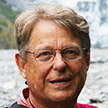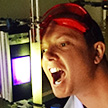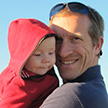Related Questions
- What happens if you explode dangerous chemicals?
- When dealing with the chemicals in your lab, have you had an experiment that went terribly wrong? Which chemicals were
- how are the chemicals you work with different to each other?
- What is your favourtie chemical
- Where would you use the explosive detectors that you make?








@chowyin13, thanks for the question. Nice profile by the way, great to see you’ve put thought into these types of questions. And before I answer your question let me suggest that even though you have a love of science and art, don’t think you can’t combine the two into an awesome career or hobby. If you’re good at art then there are plenty of people who think like you but may not understand science or your love for it. You may find expressing the beauty of science in an artistic way is a wonderful way of helping others understand.
Anyway, enough of my opinion! Sorry.
So, gunpowder eh? The 1st thing to mention is that gunpowder is classed as a ‘low explosive’ as opposed to ‘high explosive’. The important difference is that low explosives burn really quickly but don’t detonate like high explosives.
Why have a fast burn when you can detonate? Fast burn or deflagration as its called is great for pushing things as opposed to shattering. So reactions that deflagrate are useful for ‘pushing’ bullets out of gun barrels or lifting rocks out of a mine. A common use in the military is in timed fuses. If you need time to get away from the high explosive before it detonates, you can measure a length of a deflagrating material, like gunpowder, because you can predict that 1 metre will equal 10 seconds, or something like that.
Here’s a vid that tries to show the difference. Just ignore the gun craziness. https://www.youtube.com/watch?v=4OvywNsWWd4. I must point out that it’s not 100% correct. When they say detonation in the gun’s chamber, they should still be saying deflagration, but its tightly contained inside the gun so it burns under greater pressure. If you had a true detonation inside a gun, the barrel would blow apart.
So, low explosives don’t really explode, they deflagrate. What does this actually mean and how does it happen? The mathematics of how it works are very complicated, but can be broken down simply into something like this:
1. Low explosive come close enough to heat from something like a match or friction.
2. Powder particles mix with oxygen from air or water and turn into hot gas.
3. Cold powder next to hot gas also turns into hot gas and so on until there are no more cold powder particles.
If this happens in the open, then you see a nice slow burning fire or ‘crawling’ burn like on a line of gunpowder. But if its compacted into a container the build up of hot gasses will react super quickly giving the appearance of an explosion.
Hope this helps with an understanding of explosives. My favourite topic. If you want to know anything else about explosions or chemistry, feel free to ask.
0